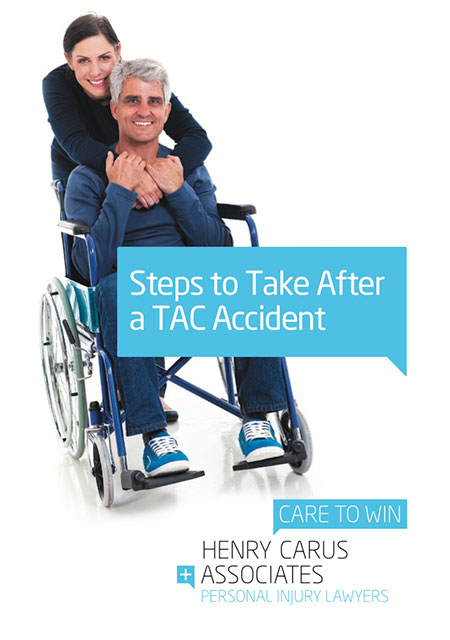
WorkCover operates on a no-fault basis. In the event of an on-the-job injury, workers are eligible for benefits without having to prove negligence on the part of their employer or any other party.
The scheme is a balancing of interests. On the one hand, not having to commence legal action simply to get your claim accepted and some support provided is a gain for injured workers. On the other hand, WorkCover limits both when an injured worker can seek more generous compensation and the amounts that can be awarded. Most of the time WorkCover benefits may not fully compensate you for all the losses you will suffer after being hurt on the job.
Given these challenges, it is in your best interest to speak to a work injury lawyer to explore all of your legal options. Contact Henry Carus + Associates for a free, no-obligation consultation.
When Can I Sue for a Work-Related Injury?
If you were injured in the workplace on or after 20 October 1999, WorkSafe recognises your right to file a common law claim in certain circumstances. Some workers injured on the job prior to 12 November 1997 may also have the right to sue.
You must be able to prove the following in order to recover common law damages:
- You were injured in the course of or as a result of your job
- You have one injury that qualifies as a “serious injury”
- Someone else is at fault for your injury
The first step to recover compensation after a work injury is to lodge a WorkCover claim. Your initial claim must include details of the accident and the injury or injuries you have suffered, which WorkSafe will review to determine your eligibility for benefits.
Serious injury considerations and questions of negligence are distinct from filing a WorkCover claim. Your lawyer can advise you how to make a common law application to WorkSafe.
1. What Is ‘Serious Injury’ in WorkCover Common Law Claims?
The workers’ compensation legislation in Victoria currently defines a serious injury as one of the following:
- “permanent serious impairment or loss of a body function; or
- “permanent serious disfigurement; or
- “permanent severe mental or permanent severe behavioural disturbance or disorder; or
- “loss of a foetus.”
You must undergo a specialised assessment to determine if your work-related injury qualifies as serious. If you are determined to have a “serious injury” as defined by law, you may be entitled to a permanent impairment benefit.
The permanent impairment benefit is a one-time lump sum payment that compensates you for permanent disability stemming from a work injury. You must complete the process of lodging an impairment benefit claim before you can apply for common law damages.
2. Negligence in Common Law Work Injury Claims
The major difference between a common law claim and other types of WorkCover claims is the requirement that somebody other than the worker must be at fault to recover damages. It is crucial to identify all of the potential at-fault parties in your initial common law application.
For this reason, it is in your best interest to contact a work injury lawyer as soon as possible if you are hurt in the course of your employment. An experienced lawyer will fully investigate the accident to determine the individuals, companies, and/or other parties that may have been at fault for your injuries.
If one or more parties were at fault for injuries related to your work, you may be entitled to common law damages such as loss of earning capacity and pain and suffering.
Read More: The Difference Between a WorkCover Benefits Claim and a Common Law Damages Claim
Will My Common Law Claim Go to Court?
Recovering common law damages under WorkSafe differs from the process of pursuing a personal injury claim. Instead of filing a claim against the at-fault party or parties, you are first required to attempt to resolve your claim through application to WorkSafe.
After receiving a common law application, WorkSafe or a self-insured employer (whichever applies in your case) will review the application and respond. This generally takes about 120 days, or approximately four months.
The insurer may dispute that your work-related injury constitutes a “serious injury.” If this happens, the question of whether your injury meets the statutory threshold will be determined by the County Court.
Whether your application to WorkSafe or to a self-insurer is accepted or not, if a county court judge later finds you have suffered a “serious injury,” you then enter a process seeking to find a compromise settlement to your claim.
Such a conference will take place between you and your lawyer on one side and representatives for WorkSafe or the self-insure on the other. During the course of the conference or shortly thereafter, WorkSafe or the self-insurer is required to make an offer on common law damages. If the offer is unsatisfactory, you and your lawyer can make a counter offer.
Most common law applications are resolved through negotiation. However, if an agreement cannot be reached, you may need to take your claim to court to recover common law damages.
Contact a Lawyer for Your Work-Related Injury
Injured workers are at a significant disadvantage in trying to handle WorkCover claims on their own. An experienced lawyer can help you lodge claims for all of the benefits you deserve, pursue common law damages, and more.
Henry Carus + Associates have unmatched experience representing clients in work-related injury claims. Our philosophy, You Deserve More, is evident not only in our efforts to secure the full benefits and other compensation to which you are entitled but in the personalised care and attention we provide to you throughout the claims process.
Please call 03 9001 1318 today for a free, no-obligation consultation. Our work injury lawyers serve clients in Melbourne and throughout Victoria.
 Call Us Today
Call Us Today



